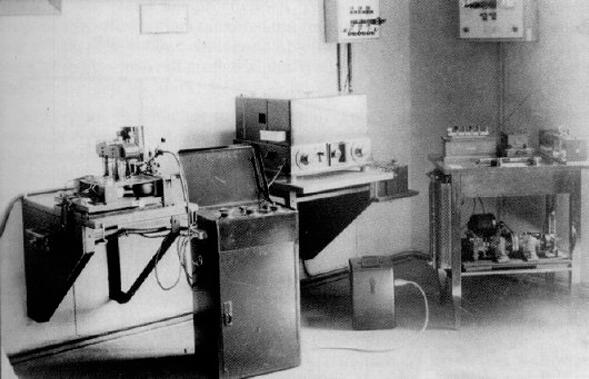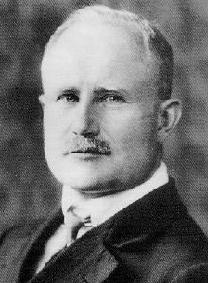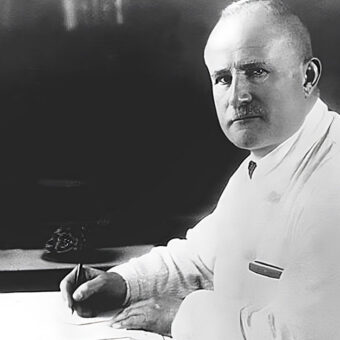Most of us who have worked in EEG and have come across the biography of Hans Berger, the father of electroencephalography, have found it passionate. Much has been written and still we don’t know many details about the peculiar life of one of the most relevant among scientists and inventors of the 20th century. Through this post I will try to summarize what I have recently read in articles and reviews about Berger’s life, and if you want to know a little more about Berger’s story and the beginning of electroencephalography I recommend you to read the following open access papers 1, 2.
Hans Berger was born in 1873 son of the chief physician of the regional asylum in Coburg, Germany. His childhood appears to be quiet and happy and when he graduated at 18 he moved to Berlin to pursue a career in mathematics, aiming to become an astronomer. He was used to the traditional quiet life of Coburg and it seems that his adaptation to the vibrant Berlin of the end of the 19th century was not easy for the young Berger. That’s why after a year in Berlin he decided to join the army for a one year military service in artillery. It is in 1892 during this period when an event occurred that completely changed his life.
During a military training exercise, while mounted on horseback, Berger’s horse suddenly reared throwing him to the ground just in front of the wheel of an artillery cannon. The horse pulling the cannon stopped just at the last second and Berger escaped from a certain death. That same evening he received a telegram from his family, that hadn’t contacted him since he joined the army, inquiring him about his wellbeing. It was from his sister, who was particularly close to him and had been overwhelmed that morning by a feeling that something terrible had happened to her brother and convinced her family to urgently contact him.
Berger got obsessed with this incident which he interpreted as a mental connection between him and his sister, and years later he would write in his diary “It was a case of spontaneous telepathy in which at a time of mortal danger I transmitted my thoughts”. On completion of his military service he resumed his studies at Jena University switching to medicine as a starting point of brain understanding, focusing his career afterwards in psychiatry and neurology.
His first efforts of recording the electrical activity of the brain were a complete disaster and that’s why in 1920 Berger took up yet another physiological technique: electrical stimulation of the brain applying weak electrical currents in the surface of the brain, but never forgetting his initial goal: measuring the electrical activity generated by the brain.
In 1924 after an electrical stimulation session Berger decided to switch the electrodes from the electrical stimulator to a modified galvanometer, generally used to measure electrocardiogram recordings, and there was his first hint of success when continuous oscillations appeared in the galvanometer.
The measured result was blurred and noisy, and for many people meaningless but it was the starting point of electroencephalography. After this success Berger improved his method trying different electrodes and galvanometers obtaining finally what he had been seeking for years, measuring the electricity generated by the brain.

By 1928 Berger had prepared and adapted the necessary equipment to measure quality EEG that revealed distinct patterns of electrical activity (waveforms) depending on the physiological state, and by this time he was ready to make his discovery available to the public. In 1929, after hundreds of recordings where similar waveforms related to the same mental tasks, 5 years after his first human EEG recording, Berger set aside his doubts publishing his first paper demonstrating the technique for recording the electrical activity of the human brain from the surface of the head, “On the human electroencephalogram”. Over the next decade Berger continued studying the electroencephalography technique discovering the alpha and beta waves and setting the neurophysiological foundations of the human EEG. His findings were met with incredulity by the medical and scientific community and it wasn’t until 1935 when he finally gained international recognition.
With Hitler’s rising in 1934 and World War II Berger’s story started being contradictory. Some biographers argue that in 1938, at the age of 65, he was forced into retirement due to his tense relationship with the Nazi regime. On the other hand some other biographers such as Dr. Zimmermann, a medical historian at the University of Jena, have found evidence that Berger was a member of the SS and had not been forced into retirement but had served on the “Court for Genetic Health” that imposed sterilizations, with the supporting fact that his diaries contained anti-Semitic comments.
During the 1940’s Berger’s health deteriorated, suffering chronic heart problems and severe skin infections. He sank deep into a depression committing suicide in June 1941. Apart from his political implications, which are still unclear, we have much to thank to this visionary responsible for discovering and measuring the voltage fluctuations of the human brain.



